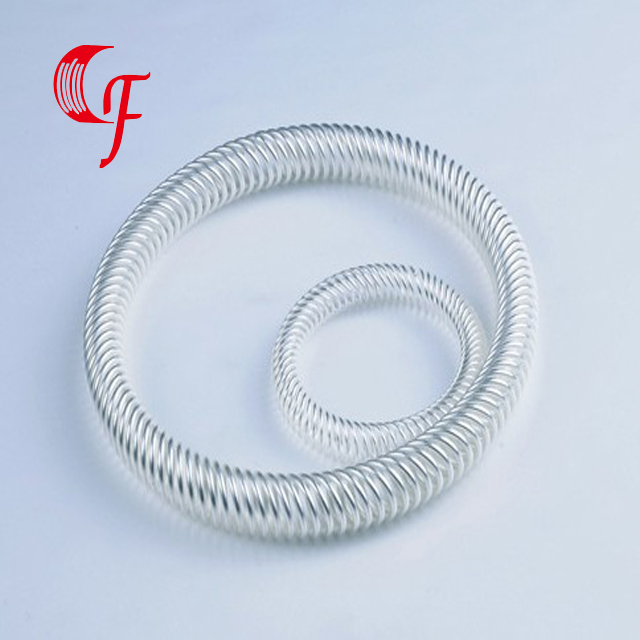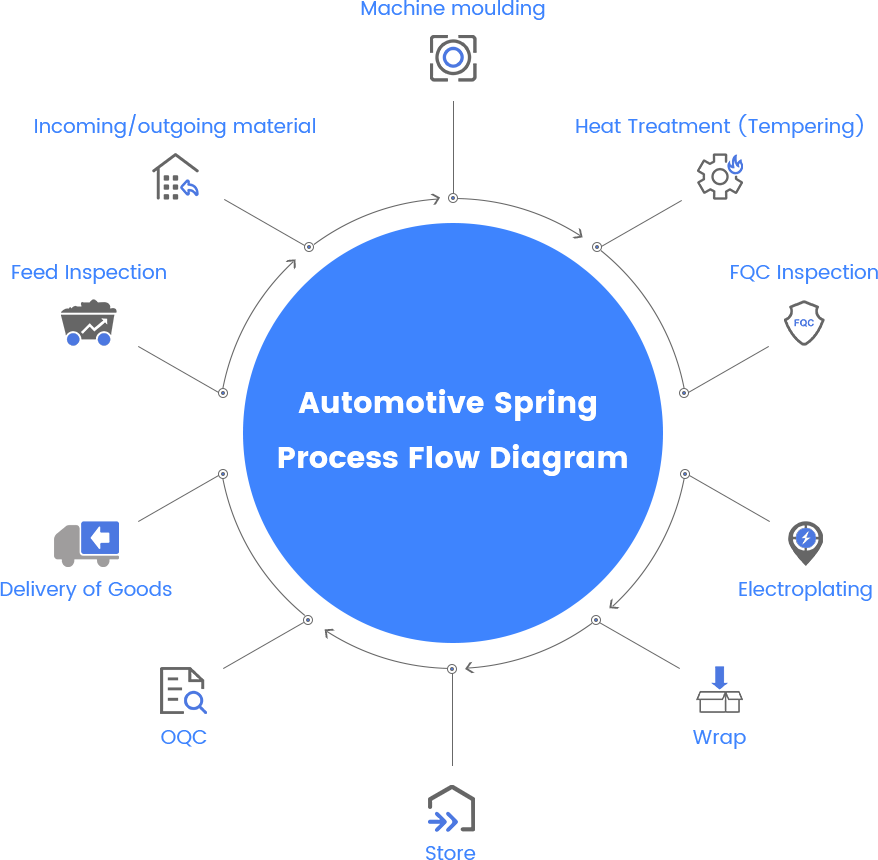+86 135-2882-5997

Key Technical Characteristics
Axial and Radial Compliance: Exhibits simultaneous axial deflection up to 60% of free length and radial deflection of 30-50% of coil diameter without permanent deformation
Load Distribution: Maintains uniform contact pressure of 0.7-35 MPa across mating surfaces even under misalignment conditions
Dynamic Performance: Capable of 107 to 109 cycles at moderate loads (20-70% of maximum deflection) depending on material
Temperature Range: Standard stainless steel variants operate from -200°C to +300°C, with specialized alloys extending to 800°C
Electrical Resistance: Contact resistance as low as 1-10 mΩ when used in electrical applications
Primary Applications
canted coil springs serve critical functions across multiple industries due to their unique combination of mechanical properties:
Aerospace and Defense
In aircraft and spacecraft electrical systems, canted coil springs provide redundant grounding paths with contact resistance below 5 mΩ, maintaining conductivity even under vibration levels exceeding 20 G. They serve in avionics connectors, missile guidance systems, and satellite deployment mechanisms where reliability must be maintained across temperature swings of -65°C to +150°C.
Medical Devices
Implantable medical components utilize biocompatible canted coil springs (typically made from MP35N or Elgiloy alloys) with fatigue lives exceeding 500 million cycles. Applications include lead retention in pacemakers (maintaining 2-5 N retention force) and MRI-compatible connectors where magnetic permeability must remain below 1.05 μr.
Oil and Gas
Downhole tools employ canted coil springs that maintain sealing integrity at pressures up to 20,000 psi while compensating for thermal expansion differentials of 0.5-3 mm in high-temperature environments (175-250°C). They prevent gas leakage in wellhead equipment with helium leak rates below 1×10-6 atm·cc/sec.
Automotive Electronics
Electric vehicle battery systems use canted coil springs for cell-to-cell connections, providing constant contact force of 10-50 N while accommodating ±1.5 mm movement from thermal cycling. Their current-carrying capacity reaches 50-200 A depending on wire cross-section and plating.
Maintenance and Care Procedures
Proper maintenance ensures optimal performance and longevity of canted coil springs:
Cleaning Protocols
For most applications, ultrasonic cleaning in 50-60°C solutions with 3-5% alkaline detergent (pH 9-11) for 5-10 minutes at 40 kHz effectively removes contaminants. Critical medical applications may require passivation in 20-25% nitric acid at 49-60°C for 20-30 minutes to restore corrosion resistance.
Inspection Criteria
Periodically examine springs for:
Coil spacing uniformity (tolerance ±0.05 mm)
Surface defects exceeding 10% of wire diameter
Permanent set greater than 2% of free length after compression
Corrosion pits deeper than 0.01 mm in critical applications
Lubrication Requirements
For dynamic applications, apply thin films (2-5 μm) of perfluoropolyether (PFPE) grease for high-temperature environments or silicone-based lubricants (ISO VG 10-22) for standard conditions. Avoid petroleum-based lubricants in oxygen-rich environments due to flammability risks.
Storage Conditions
Store springs in controlled environments with:
Temperature: 15-25°C
Relative humidity: 40-60% RH
Protective atmosphere: Nitrogen purge for precious metal alloys
Orientation: Flat storage to prevent creep deformation

Get in touch with our engineering and sales teams.
We will help you to find the best solution.